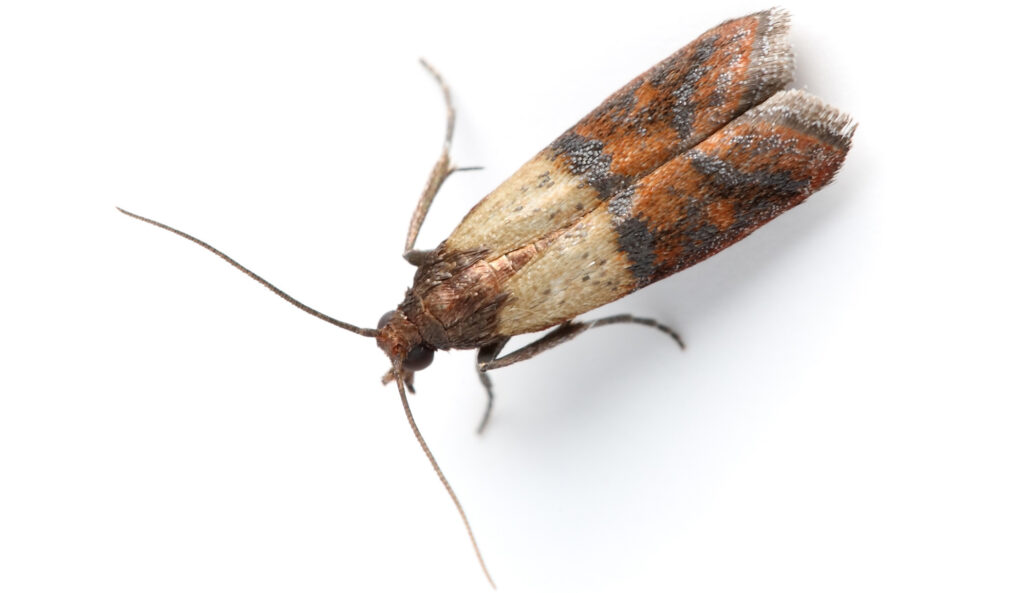Indian Meal Moths

Origins and distribution
Worldwide and endemic, it is common in the UK where it has become a serious pest species.
Characteristics
The moth has a 14 – 20 mm wingspan and is easily identifiable by the distinctive colouration of the forewing. The first third towards the head is a cream or grey colour and the remaining part of the wing a copper or reddish brown. The larvae may be a yellowish or pale green colour depending upon the foodstuff eaten and have a light brown head. The pupa is a yellow brown colour.
There are a number of other stored product moths in the UK that attack a wide range of cereal and food products such as:
- Tropical warehouse moth (Ephestia cautella)
- Cocoa or tobacco moth (Ephestia elutella)
- Meal moth (Pyralis farinalis)
- Flour moth (Ephestia kuehniella)
- European grain moth (Nemapogon granella)
- Rice moth (Corcyra cephalonica)
Breeding
The adults will lay anything between 150 to 300 eggs in foodstuffs to enable to the larvae to feed. The eggs hatch in approximately 2 – 8 days. The larvae contaminate the foodstuffs by spinning silk webbing, direct damage by eating as well as frass (faeces). Larvae go through a stage of 4 – 7 moults before pupating, with the time from egg to adult taking anything up to 8 – 10 months depending upon temperature.
Habits
Found indoors in warehouses, food factories and health food shops on a wide range of food products where the adults are mobile (on the wing). The damage is carried out by the larvae only, usually infestation is an indication of old or poor stock rotation.
Importance
The larvae attack a wide range of food products such as nuts, dried vegetables and fruit, confectionary and grain. The larvae can eat through most packaging materials such as paper, foil and cardboard contaminating products which result in costly loss.
How we control Indian Meal Moths
Infested material must be removed, destroyed or where possible fumigated. The walls, floors and wall to floor junctions are treated with a residual insecticide applied by hand held compression sprayer, with the area treated with a ‘space spray’ application of insecticide applied by a ‘fogging’ machine. The area needs to be vacated for a specified period of time before being allowed to re-enter. This ensures that any adults, which are mobile and on the wing, are controlled. Before using an area that has been treated it is essential that any preparation surfaces or machinery is adequately washed down.


















